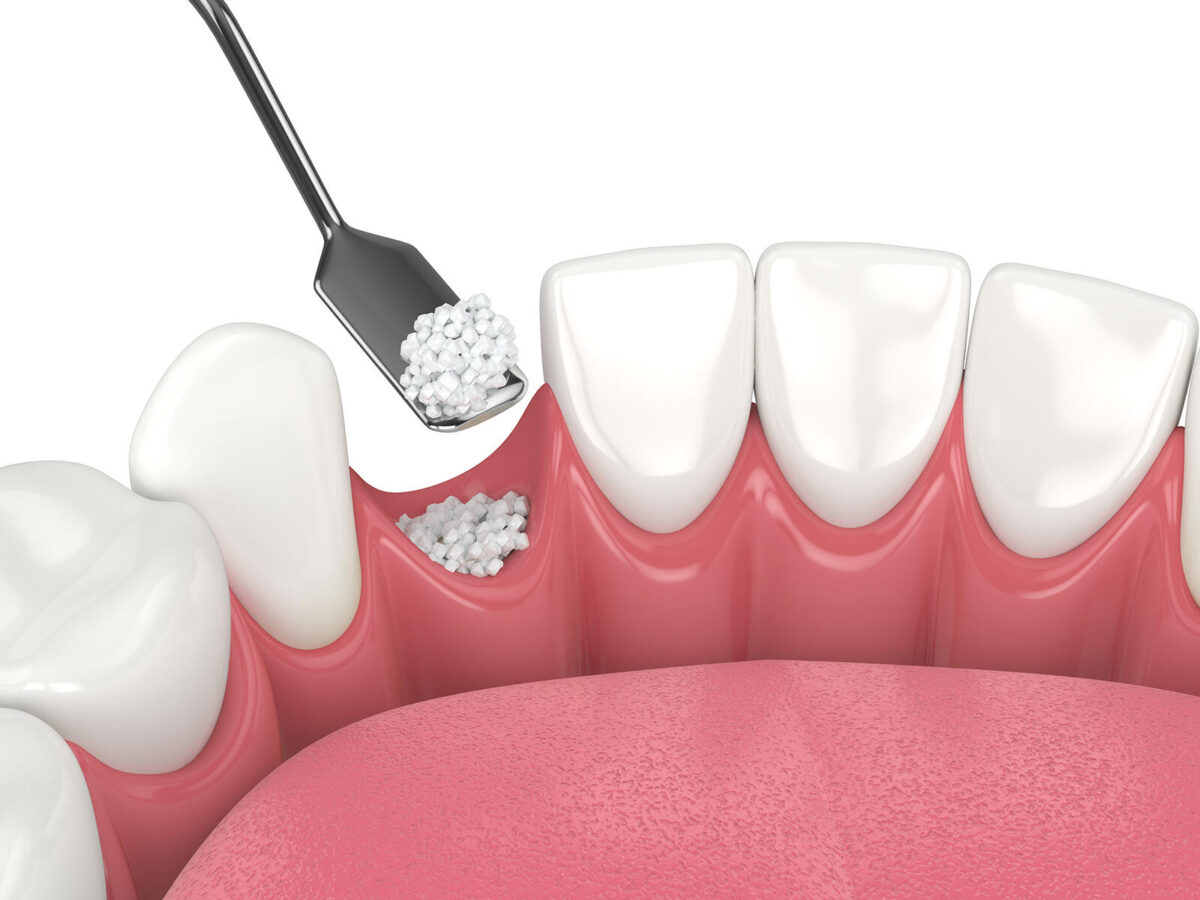Blog
Dental hygiene tips for healthy teeth & gums

Understanding Bone Grafting In Oral Surgery
A dental implant can completely restore your smile when you have to replace a tooth that has been pulled or lost. These remarkable replacements serve the same purpose as natural teeth. There are also some important things to consider before dental implant preparation.
Dental implants can only be used if there is enough jawbone. Thankfully, some operations, such as bone graft procedures, can enhance your jawbone’s density and volume. Find out how this process can improve your implant’s chances of success.
What is a dental bone graft?
When your jaw has lost bone, a dental bone graft fills in the gaps and gives your jaw more volume. The material comes from your own body for an autogenous bone graft procedure. It comes from human or animal tissue stores for an allograft or xenograft.
Who undergoes a bone graft procedure?
Some people who have lost bone in their jaw need a dental bone graft. Doctors might suggest this process if:
- You are getting a tooth pulled out.
- You need to fix up the jaw before getting false teeth.
- You get gum disease, which causes bone loss around the teeth.
- You are planning to get a dental implant to replace a missing tooth.
Step-by-Step Dental Bone Graft Procedure
A periodontist or oral surgeon will discuss the treatment plan and bone grafting material with you before your dental bone graft. Your bone grafting method will depend on the aim, but the following phases are standard:
Step 1: Anesthesia
Your dentist will numb the surgery location for jawbone regeneration with local anesthesia. If they use tissue from your body or you have oral phobia, you may need IV sedation.
Step 2: Extraction
If you use an autograph, the dentist will start with bone from the designated area. If necessary, the surgeon will extract a tooth. Combining tooth extraction and bone grafting speeds healing.
Step 3: Grafting
A dentist will next thoroughly clean the region. The dentist will cut the gums without an extraction to expose the bone. He will next apply bone graft material to the exposed bone.
Step 4: Stitching
Close the region after placing the graft. Dental professionals may employ pins, plates, wires, cables, or titanium screws to hold tissue together. If you use a bodily bone, the surgeon will stitch it up.
Step 5: Recovery
You can usually return home the same day. It takes four to six months to recover and have a dental implant. To avoid failure or problems, follow your dentist’s care instructions.
Key Benefits of Bone Grafting for Oral Health
Some of the major benefits of bone graft procedure are –
- Promotes the formation of new bones and quickens the healing process.
- Stabilizes dental implants by filling up spaces and fissures in the jawbone.
- Prevents bone resorption and maintains bone structure and thickness, hence preventing bone loss.
- For bones that have suffered damage from illness or trauma, this aids in rebuilding density and strength.
- Restores the harmonious appearance of the face by filling in defects caused by missing jaw or facial bones.
Possible Limitations of Bone Graft Procedure
Dental bone grafts, despite being largely safe, inherently contain dangers, including the following:
- Heavy Bleeding: A potential complication you should consider despite its uncommon.
- Anesthesia Dose: Complications associated with anesthesia require careful attention and management.
- Nerve Damage: Although uncommon, it can occur, highlighting the significance of precision throughout the grafting technique.
- Oral Infection: Although the likelihood of infection is quite low, monitoring and responding rapidly if you discover it is necessary.
Conclusion
Bone grafting supports dental implants and other oral surgical treatments, making it essential. Patients can make informed oral health decisions by knowing the details of bone graft procedures. Contact the Crosby Family Dental in Crosby TX, for any bone grafting questions.


